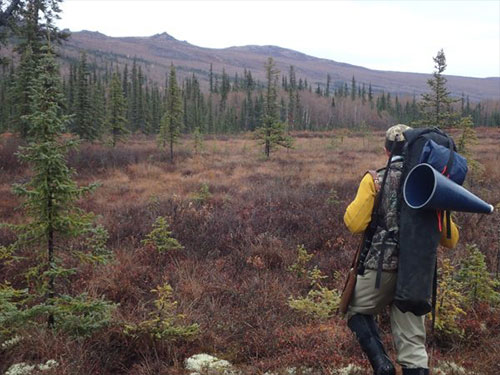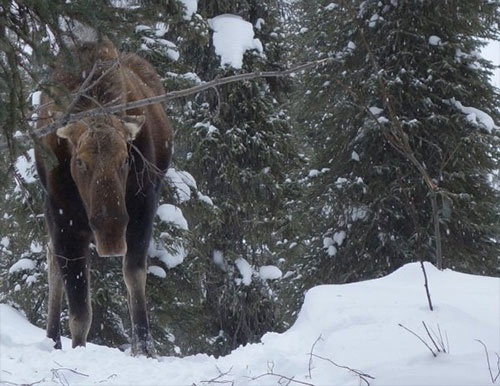
Three Millions Pounds of Frozen MooseBy NED ROZELL
October 18, 2018
I knelt and plugged my ears with my fingers. My friend raised his rifle and shot. Twenty minutes later, as daylight faded, we found the bull moose dead beneath a small spruce tree. We pulled out our headlamps and began the work of processing an animal as large as a grand piano. We pushed up our sleeves with a sense of gratitude, anxiety at making the correct cuts, and the knowledge that we would not be slipping into our sleeping bags any time soon.
Hunter reports for 2018 are still trickling into the offices of the Alaska Department of Fish and Game, but my friend is now in the group of successful moose hunters for the year. In 2017, 23 percent of general-season moose hunters reported success in Alaska. The largest members of the deer family live anywhere there are trees and shrubs in Alaska, from the Alaska Peninsula to the Beaufort Sea. There is a healthy population of about 175,000 moose in the state, with peak numbers in Interior river valleys. In defending her master’s thesis recently at the University of Alaska Fairbanks, Tessa Hasbrouck noted that about 29,000 Alaskans and non-residents hunt for moose each fall in Alaska. They harvest more than 7,200 of the giant creatures — a mature bull can stand six feet at the shoulder and weigh 1,600 pounds (the same as a grand piano). An animal that size will result in 700 pounds of sliced and wrapped meat. Each year, about 3.5 million pounds of Alaska moose makes its way into freezers. That’s a lot of Alaska-grown protein that was not transported up the Alaska Highway by truck. Hasbrouck reported that more than 90 percent of surveyed rural households in Alaska used moose. She also noted that hunters fire a lot of dollars into the Alaska economy. Moose hunting equates to about $78 million each year for state businesses. A good deal of that is in the form of gasoline for trucks, boats and four-wheelers.
Hasbrouck studied hunter interactions off the middle Yukon River and near Fairbanks. She said many people who hunted moose on the middle Koyukuk River drove trucks, trailers and boats to the launching point at the Yukon River where the Dalton Highway crosses it. Those hunters were from as far as Ketchikan, which also required a ride on the state marine ferry system. People go a long way and spend a lot of money to pursue Alaska’s most-hunted animal because it’s a tradition for many, Hasbrouck said. The reward for an impressive amount of time and labor is sometimes a freezer full of meat. With most hunting seasons now closed, the vast majority of Alaska moose are still roaming the landscape. For them, with a change of season comes a change of diet. In summer, moose eat lush aquatic greens, forbs and green leaves of willow, birch and aspen. Now, with the leaves on the ground and the ponds hardening, moose nip twigs of willow, birch and aspen. That wood contains energy-packed buds that will be next year’s stems and leaves. Tom Seaton of ADFG knows what it takes for a moose to endure the dark months. In his thesis research in the Tanana Flats south of Fairbanks, Seaton found moose need about 30 pounds of frozen twigs to survive each winter day. “It’s something like a dog food sack or tall kitchen garbage can full of twigs each day,” he wrote in an email. “Most twigs are less than pencil thickness. Ask any person to go to the woods for a day and collect 30 pounds of live frozen twigs. I would argue most people couldn’t do it. Either way, they would soon learn to look at the landscape like a moose and learn why moose go where they do in winter.”
|
||||||

